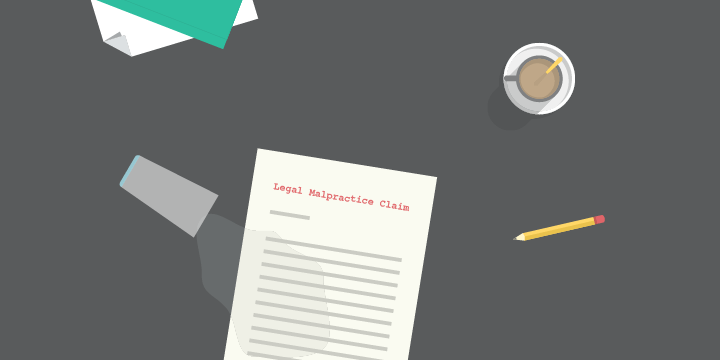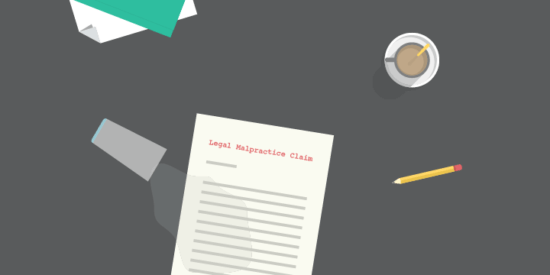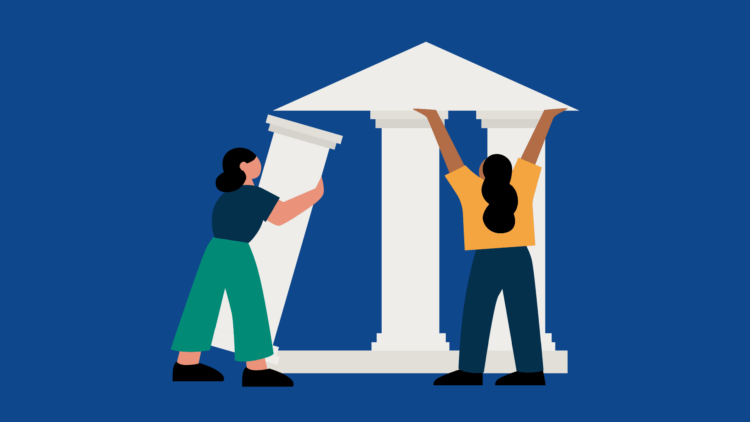The financial costs of a legal malpractice claim can be enormous—often enough to derail a solo or small firm practice permanently. And if you think it can’t happen to you, think again. Unfortunately, even the best and most experienced lawyers can be victims of malpractice traps.
The costs resulting from a legal malpractice claim can be complex and multifaceted, often compounding as they go on. The financial total usually includes legal defense fees, settlement or judgment on the substantive claim, costs and expenses, and higher malpractice insurance rates going forward. The financial total could also include fines and loss of income from the placement of conditions or restrictions on practice or, in extreme circumstances, disbarment. In any case, a legal malpractice claim requires the lawyer affected to take time and energy away from representing clients and earning fees, impacting the finances of their practice.
A legal malpractice claim may also be accompanied by an ethics claim, which requires more legal fees to fight, and may result in a sanction of suspension or even disbarment.
On top of everything, the stress of defending a claim is unquantifiable, even if the lawyer is ultimately vindicated. In this article, we outline the elements of a legal malpractice claim and what to do in the event you ever encounter one as a lawyer.
What are the 4 elements of a legal malpractice cause of action?
The four elements of a legal malpractice cause of action are: The existence of a legal duty, the breach of that duty, causal connection between the breach and injury, and measurable harm from the injury.
Legal malpractice claim vs. legal malpractice lawsuit
It’s important to remember a legal malpractice claim is not the same as a lawsuit. The filing and prosecution of a legal malpractice lawsuit requires ample discovery resources, negotiation, arbitration, etc. In comparison, the assertion of a legal malpractice claim is simpler. Regardless, all lawyers should take steps to avoid the risk of malpractice.
What are the 3 types of malpractice?
The three most common legal malpractice claims include misappropriation (misusing money from client retainers), missed deadlines (incorrectly budgeting the time to pursue a legal action can lead to the dismissal of your case), and conflict of interest (representing clients who present a conflict).
What to do about a legal malpractice claim
When the unthinkable happens, managing all potential outcomes of a legal malpractice claim becomes a top priority. You should know what precautions to take when dealing with a claim, how and where to get support, and how to handle the situation that led to the claim in the first place.
Below are six steps to take in the event of a legal malpractice claim.
You may like these posts
1. Notify your legal malpractice carrier immediately

Notify your legal malpractice carrier as soon as you realize that a claim may be on the horizon. This could be when you recognize that you made a mistake, or it may be when you get a letter from the client accusing you of a mistake you did not make.
It doesn’t matter whether you believe the claim is viable or not; if you think a client may bring a claim or if they’ve brought one to you, notify your carrier. Insurance companies can deny coverage for a malpractice claim that you failed to report in a timely fashion.
2. Seek counsel
Your legal malpractice carrier may refer you to counsel, or you may already know who to call. Either way, consult someone who is knowledgeable about defending a legal malpractice claim, and listen to their advice. This can be an emotional time, and you may be too defensive to view the case objectively.
3. Mitigate the damage
Take whatever steps you can to mitigate the damage of the legal malpractice claim.
This does not mean you should capitulate to every unreasonable client demand. Some clients will demand full refunds at the outset. In theory, this may mitigate the entirety of the damage, but agreeing to full refunds to every disgruntled client may unnecessarily lead you to bankruptcy.
What mitigation does mean is that you should see what you can do to keep the client from being harmed—or harmed further.
4. If you are still engaged in the representation, withdraw
If you are at a stage in a matter where you need court permission to withdraw, explain to your client that you are going to seek leave of court if they do not substitute you immediately.
A client bringing a legal malpractice claim forward likely doesn’t want you representing them as it is. However, you should pursue this to complete withdrawal to make sure you have no ongoing duties to the client as you seek to defend yourself.
At the same time, provide the client with their file, and be sure to document their receipt of the file.
5. Cease direct communication with the client
Once you’ve withdrawn your representation and provided the client with your file, stop direct communication with the client. Get involvement from counsel instead.
6. Analyze what went wrong

How did this situation get to the point of a malpractice claim? What safeguards can you put in place to make sure this situation is not repeated?
Nearly half of all malpractice claims can be prevented with the right tools. Learn more about how legal practice management software can help safeguard your firm.
Address problems before they cause harm
Managing outcomes in the event of a legal malpractice claim is best done before problems arise. Implementing the proper systems and ensuring all your staff are trained on all law firm processes is key. And remember to do your best to stay calm. Don’t assume a legal malpractice claim will become a lawsuit, as they are different.
Final notes on legal malpractice claims
It may seem as though facing a malpractice claim could never happen to you. While we hope this is the case, it’s always a good idea to be prepared. By following the steps outlined above, you’ll be able to avoid turning a legal malpractice claim into a litigation nightmare.
About Megan Zavieh
Megan Zavieh is a runner, Spartan racer, mother of four school-age Montessori children, and a legal ethics attorney focusing primarily on California State Bar defense. She passionately believes that none of her colleagues should face the State Bar alone, so she represents attorneys and provides consulting assistance to lawyers representing themselves in ethics investigations. Megan built her broad range of litigation experience through a federal clerkship in New York and employment at three New York area law firms. In 2010 she launched her own practice focusing on California State Bar defense.
We published this blog post in April 2017. Last updated: .
Categorized in: Business








